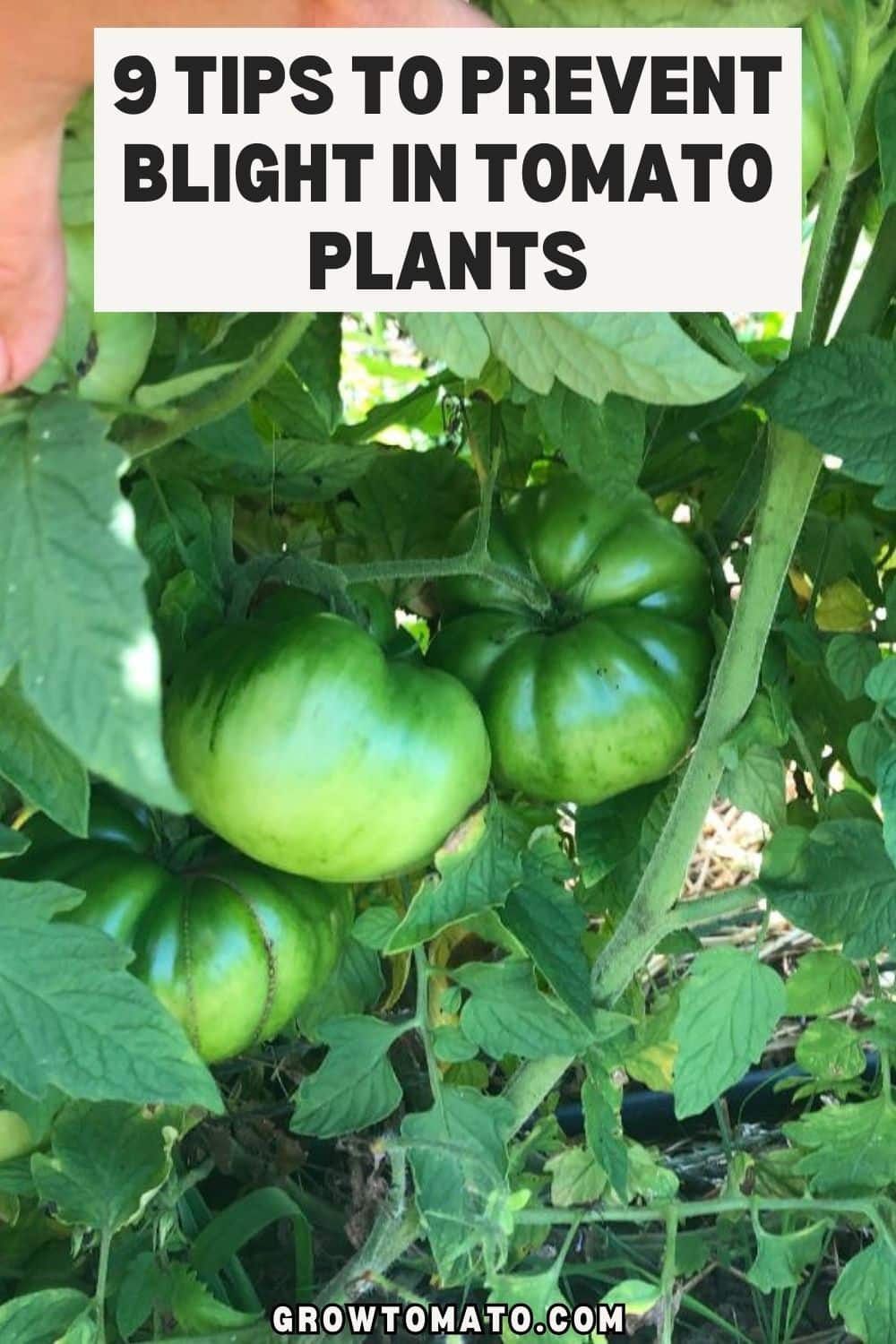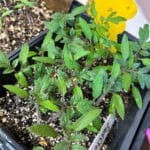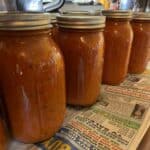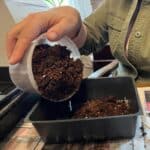Blight –both early and late blight – are common diseases of tomatoes. Blight is extremely frustrating, because it is a disease that affects your plants later in their lives.
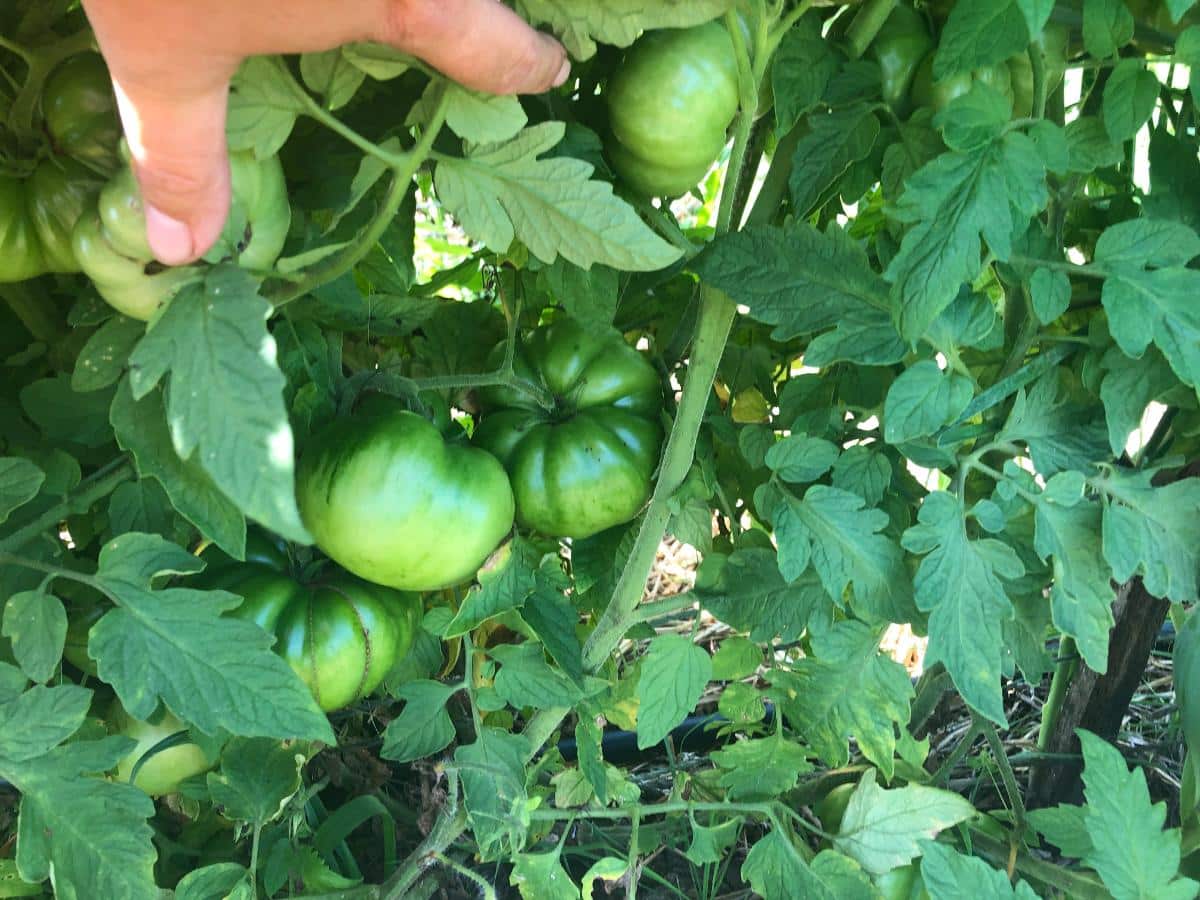
As in, just when you have big, beautiful plants that are looking stellar and getting ready to give you the best tomato harvest ever.
Then, one day, you see a spot or two, usually low on the plant. The next day, it climbs up. Within a few days, your entire tomato patch is brown and dead.
Jump to:
- Tomato Blight is Something Most of Us Have to Live with These Days – But There’s Hope
- Prevention at Planting Time:
- 1. Rotate Planting Areas Annually
- Rotating tomatoes in small garden beds
- 2. Invite Airflow
- 3. Feed the Soil
- 4. Use a Deep Planting Method to Strengthen Your Tomato Plants
- Preventing Tomato Blight After Planting:
- 5. Mulch
- 6. Don’t Water from Overhead
- What’s wrong with using overhead sprinklers?
- 7. Water Only When You Need To
- 8. Prune Low and Excess Foliage
- 9. Find a Few Good Preventions and Treatments for Blight (Preferably Natural and/or Organic)
- If Tomato Blight Rears its Ugly Head
- If blight does find your tomatoes:
Tomato Blight is Something Most of Us Have to Live with These Days – But There’s Hope
It doesn’t have to be this way. There are things you can do to prevent tomato blight and even deal with it.
With good planting, good prevention, and consistent care, you can give your tomato plants the best defense to resist blight and control it if it does come.
Prevention at Planting Time:
Tomato blight prevention and action can be broken into two basic categories.
The first and one of the most effective ways to prevent blight in tomatoes comes at or around planting time.
If you set your tomatoes up well when they’re planted, you can reduce (and if you’re lucky completely prevent) blight in your tomatoes.
Here are some prevention tips to use at planting time:
1. Rotate Planting Areas Annually

If you have enough space in your garden, try rotating the location of your tomato patch each year.
This can help keep this year’s plants out of soil that may have been infected last year.
If you use a no-till or limited till method to prepare your soil, that can be even more effective because it’s not moving and spreading the soil throughout the garden.
Blight spores live well in the soil, but they don’t travel well on their own. If we don’t move them, we can plant our tomatoes away from infected areas.
Rotating tomatoes in small garden beds
Rotation can be difficult in small garden beds because space is limited. It is made harder if you have permanent or semi-permanent structures set up as your tomato supports (like arches or cattle panel trellises or tie-up frames).
One option is to trade off support systems with other trellised or supported vegetables.
For example, in year one, use one panel for growing peas or pole beans, and in year two, switch where you plant the peas and tomatoes (tomatoes on the pea fence, peas on the tomato fence).
Another advantage of rotation like this is that legumes (peas and beans) fix nitrogen in the ground and tomatoes need nitrogen. It’s a natural way to set up the soil for next year’s tomato crop.
2. Invite Airflow
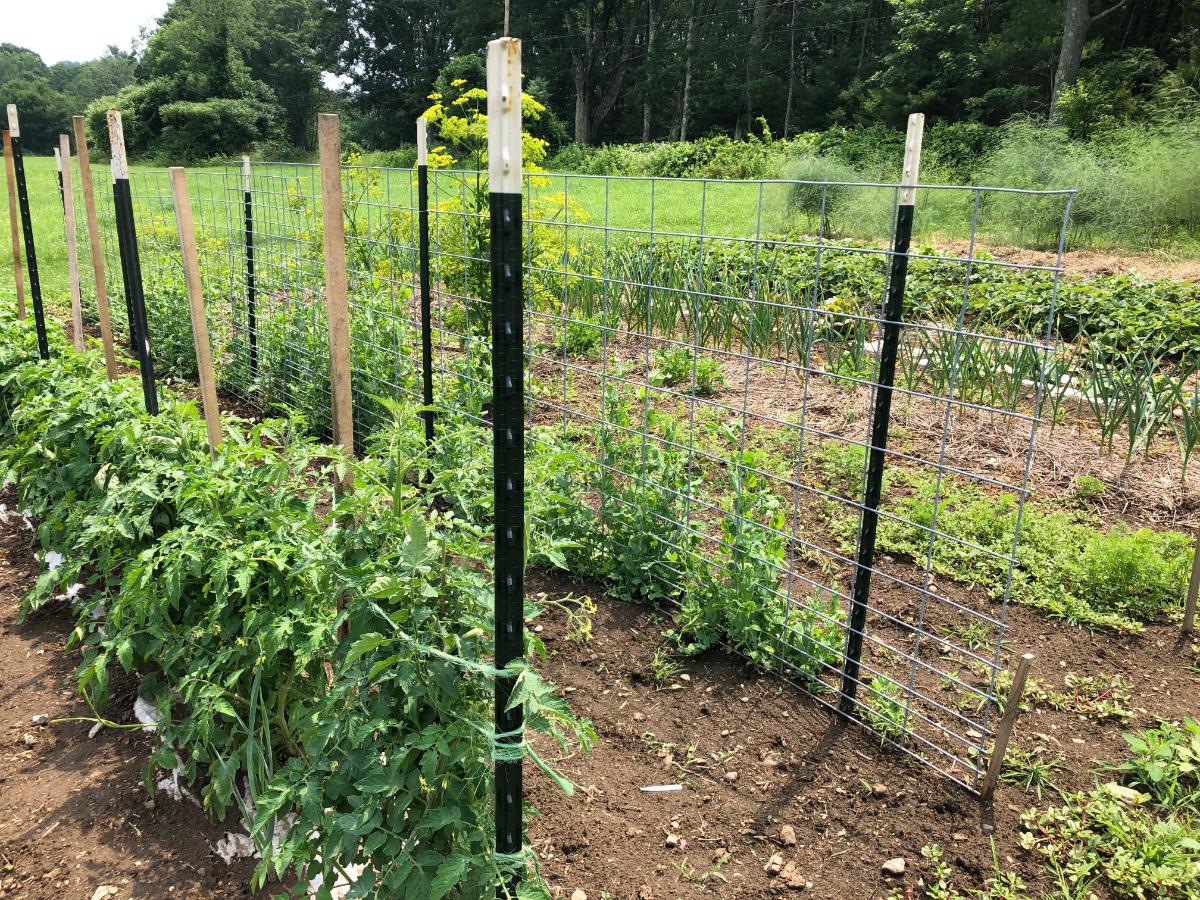
Space your tomato plants so that they have space for air to circulate around them.
When tomatoes are planted too closely, they grow into each other, and there is no movement of air. This keeps plants wetter than they should be and shaded, and the combination of cool and wet invites blight spores to reproduce and colonize.
Having plants close together also lets the spores spread from one to another with ease. What might start and be controlled as a small problem can quickly become a widespread issue.
- Plant tomatoes at least two feet apart
- Three feet between tomato plants is even better
- Space rows of tomatoes four or more feet apart
- Create airflow at the bottom of the plant by removing the lowest leaves
3. Feed the Soil

Good moisture and nutrients will allow plants to grow stronger. Strong plants have better immune systems and can fight off disease better.
Stronger plants will also rebound better if blight or diseases do strike.
Before you plant, amend your soil to the needs of the tomatoes. A good dose of compost or aged manure will often provide all the nutrients your tomatoes need.
If you need to fertilize, universities recommend a balanced fertilizer like a 10-10-10 fertilizer. Fertilizer with calcium or bone meal or applying it in addition to the fertilizer or compost will help prevent blossom end rot, too.
You should test to see if your soil has the right pH for tomatoes, too. Tomatoes like soil in a pH range of 6.2 to 6.8. You can do this with a simple home test kit or pH meter.
Adjusting the soil pH to the right level allows the plants to access the nutrients in the soil, which support their growth and immune systems.
Just be careful not to overdo the nitrogen on tomato plants. Excess nitrogen invites blight because it results in excessive foliage growth, which is what the spores attack. (Excess nitrogen also reduces tomato yields.)
Nitrogen is easy to test for with the home test kits linked above. Don’t apply more nitrogen if your soil doesn't need it. Nitrogen is important for these heavy-feeding plants, but you can have too much of a good thing.
4. Use a Deep Planting Method to Strengthen Your Tomato Plants
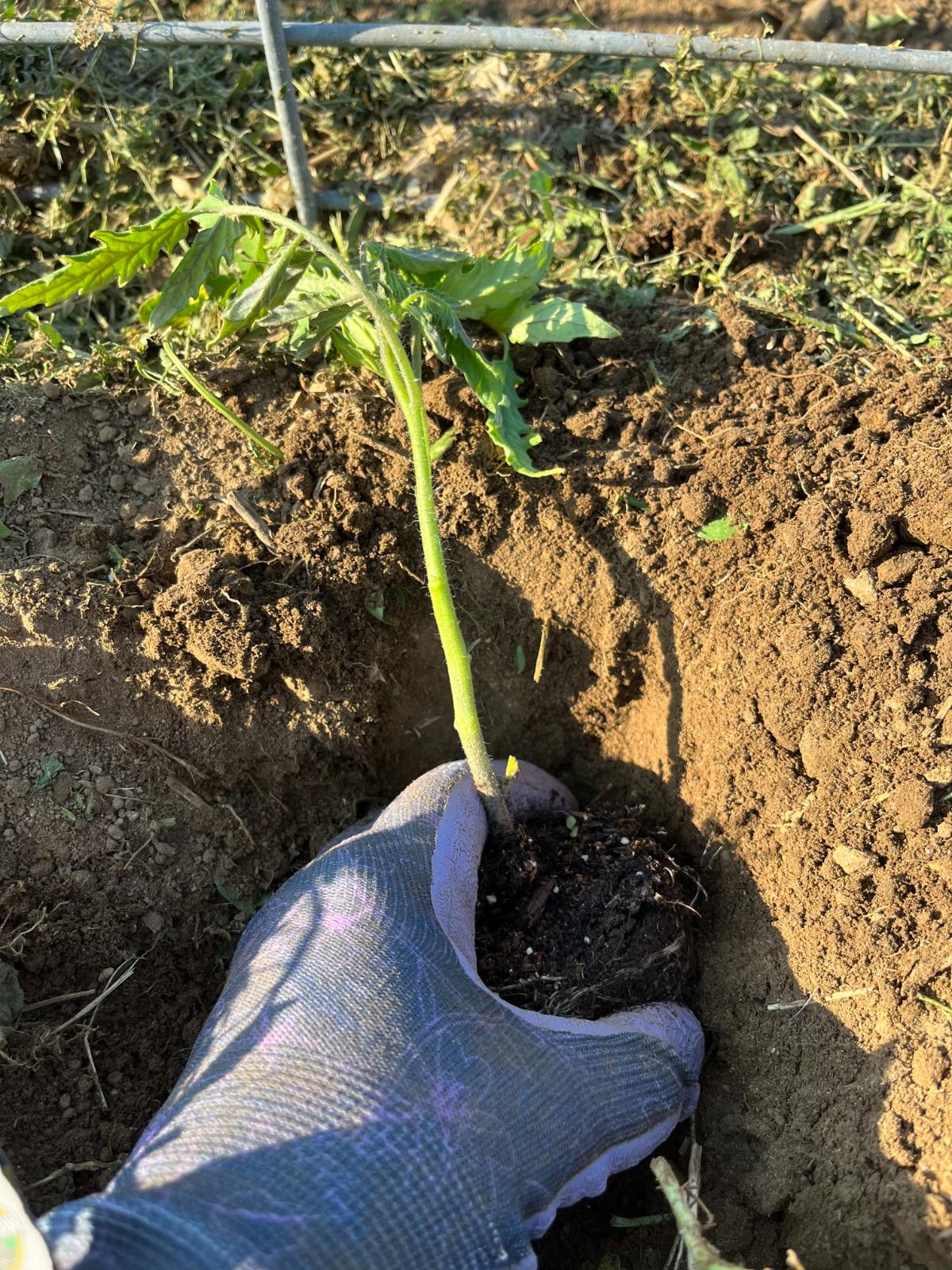
Planting your tomatoes deeply or on their sides (or deeply on their sides) allows them to grow more roots.
This is a great support to the plant that results in vigorous growth, good fruit yields, access to ground water and nutrients, and immune support to help fight off disease.
This is an easy thing to do that takes no more time than regular planting but it can help the plants a lot.
Preventing Tomato Blight After Planting:
There are some crucial steps to take after planting that really make a big difference in preventing blight in your tomatoes.
These tips can keep blight spores from being able to colonize your plants by denying them the conditions and hosts they need to grow to a level that negatively affects your tomatoes.
These are the things to start doing after your tomatoes are planted. The sooner you start, the better – don't let blight ever get a hold on your tomato plants!
5. Mulch
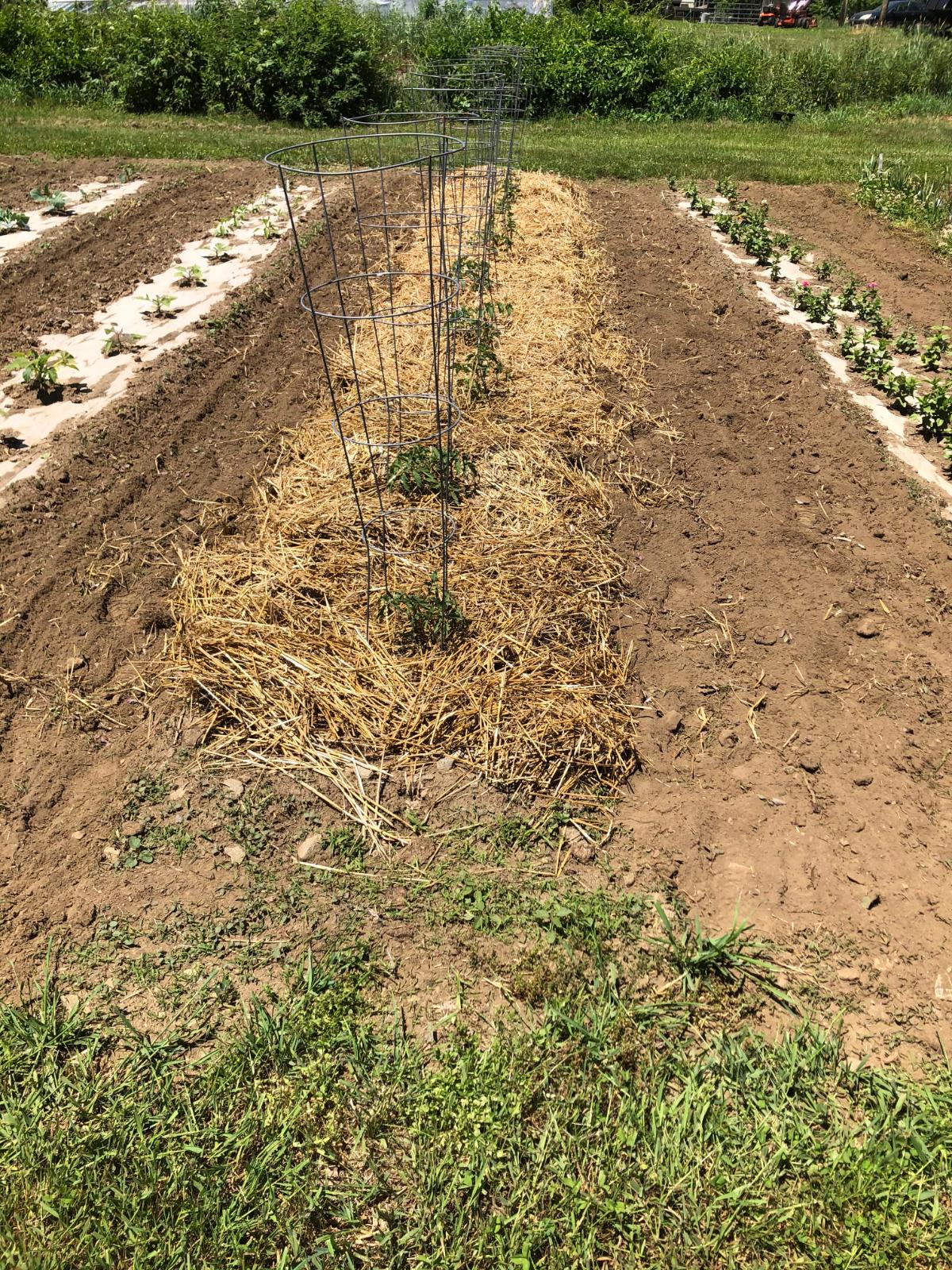
Blight, especially early blight (and also other tomato wilt diseases) are borne of the soil. Spores live in the soil and splash up onto the plants where they spread up and over the plants.
Early blight overwinters and is not killed off. It stays in the soil indefinitely.
Late blight blows in on summer storms, but its presence in the soil can cause problems if infected soil splashes up (if conditions are right, late blight can also immediately infect the plants, which is why other tips on this list are important, too).
To protect your tomatoes from soil-borne spores, mulch a wide area around the base of your plants. Then, spores can’t be splashed up from the soil when it rains or while watering.
Mulch at least two feet all around each plant. The wider your mulch, the more distance the plants will have from the soil and potential splashing.
Good products for mulching tomatoes and preventing soil splash include:
- Straw
- Cardboard
- Paper or newspaper (not glossy!)
- Shavings
- Leaves
- Pine needles
A simple method of cheap, effective double-duty mulch protection for blight prevention
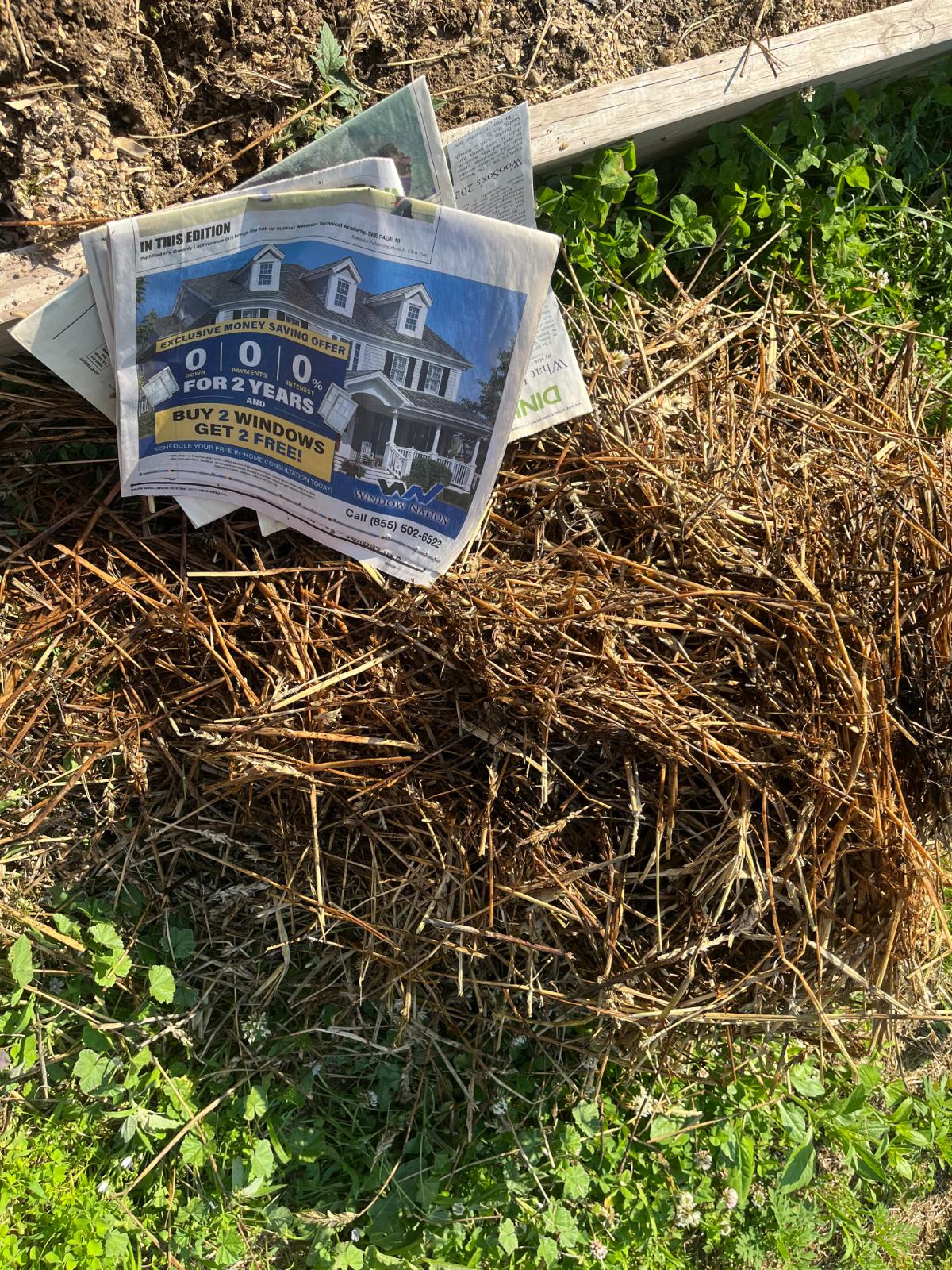
A simple and easy way to give your tomatoes extra protection is to first lay a layer of newspaper, craft or packing paper, or cardboard and then cover that with straw.
This will create a permeable but tough barrier that will stop weeds from growing and prevent soil contact with your tomato foliage.
The added benefit is that the mulches are organic and can be left to decompose in place. In the fall or next spring, the mulch and paper can be tilled right into the ground. (If you are a tiller – if you’re not, they can stay in place to break down or become part of a lasagna garden layer.)
That will provide extra organic matter, moisture retention, and tilth to your soil in years to come.
6. Don’t Water from Overhead
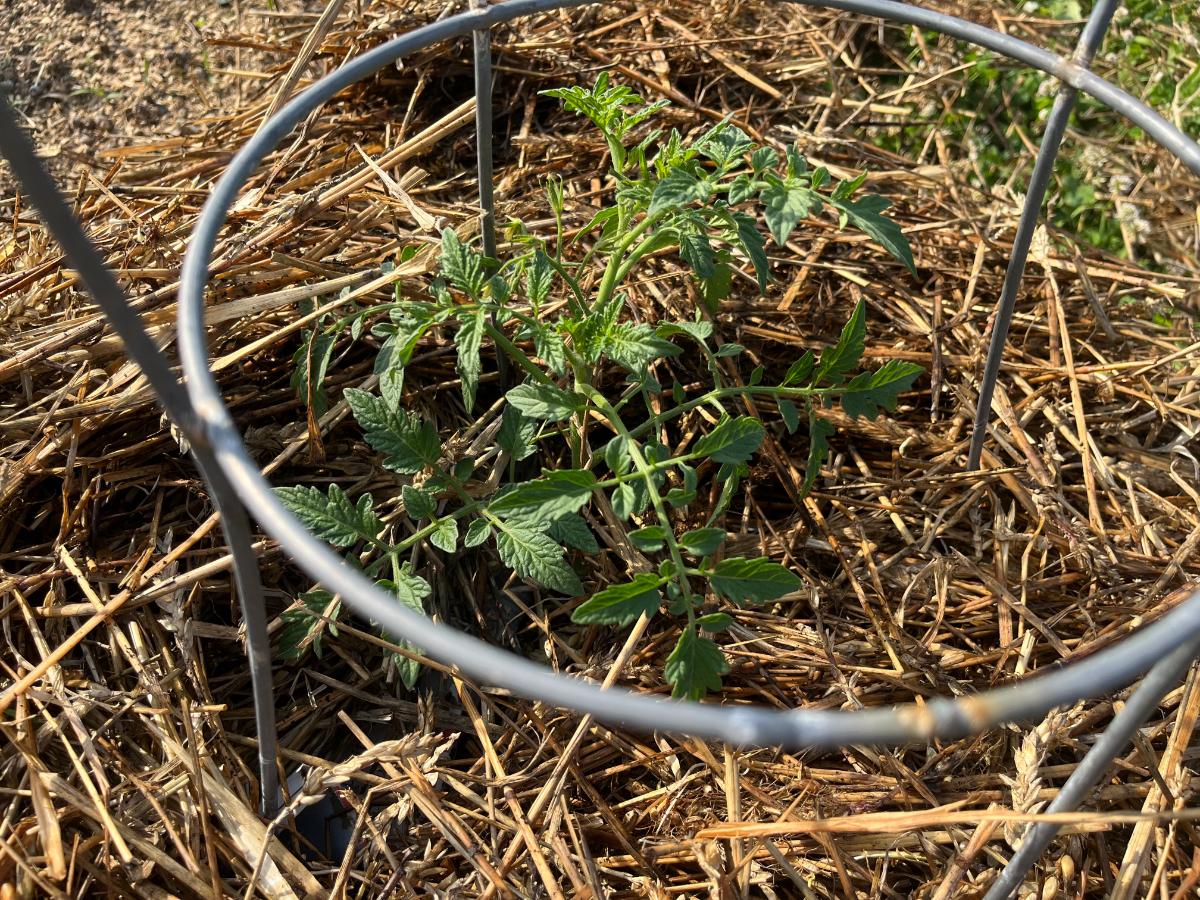
Overhead watering is a problem for all kinds of blight, both early and late.
The one thing blight spores need to get a foothold on your plants is moisture. This can come from humid air and rain, but unless you are getting constant rain, the plants will typically come through natural moisture fine because they will dry in between.
What’s wrong with using overhead sprinklers?
The problem with overhead watering is that it takes a long time to deliver an equivalent amount of water, which means the plants are being wetted for an extended period.
Another problem is that you are unnecessarily wetting the leaves and foliage when all the plants really need is soil moisture through the roots.
One of the biggest problems of all, though, is that overhead wetting causes soil to splash along with wet plants.
Finally, overhead watering can wash blight-causing spores down a plant and infect the whole plant in just a day or two.
All in all, it’s a recipe ripe for blight colonization.
If you have no choice but to water overhead, do it early in the day so the plants dry off quickly and aren’t wet in the cool of the night (cool temperatures promote fungal growth, too).
Early watering also allows the plants to drink up and face the heat of the day. This diminishes heat stress, which keeps your tomato plants stronger and fighting fit.
Soaker hoses and drip irrigation are the gold standard for watering and blight prevention
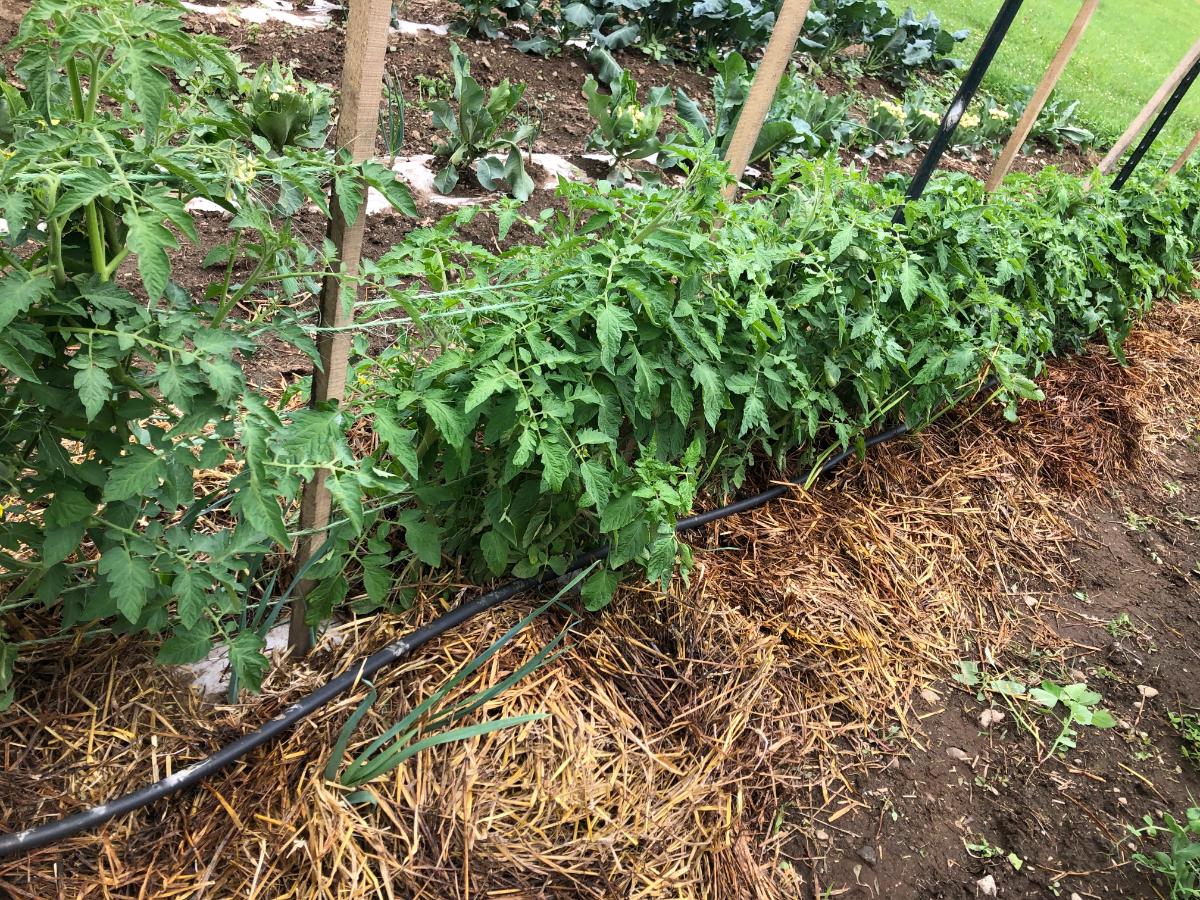
The best way to irrigate (or water) tomatoes is to do it without wetting the plants and without causing soil splash.
This is easily done with soaker hoses or drip irrigation. Lay these out while the plants are small (ideally at the time of planting), and they will be in place when needed.
If you can provide your tomatoes with the moisture they need without splashing and getting the plants wet, both early and late blight will have a hard time reproducing to a point where they can impact the plants.
7. Water Only When You Need To
Don’t water for the sake of watering; water only when your plants need it.
Tomatoes need between one and one and a half inches of water per week. In high heat, water towards the higher end. If they look wilted from heat, you can go a bit more, but don’t overdo it.
Overwatering leaches soil nutrients away from plant roots, which we know impacts their growth and health. It also increases the amount of moisture on and around the plants for no good reason.
It’s best if the plants get the water in about two equal doses per week, three or four days apart. You can’t control the rain pattern, but you can control if and when you supplement by watering.
If you are getting one to one and a half inches of rain in a week, you shouldn’t need to provide any more water.
If you get some rain but less than that, only water to make up the difference.
Tip: Put a rain gauge in the ground in your tomato row or sink a can (like a tuna can or cat food can) that is about one inch deep in the soil under your soaker hose. When it is full, shut the water off.
8. Prune Low and Excess Foliage
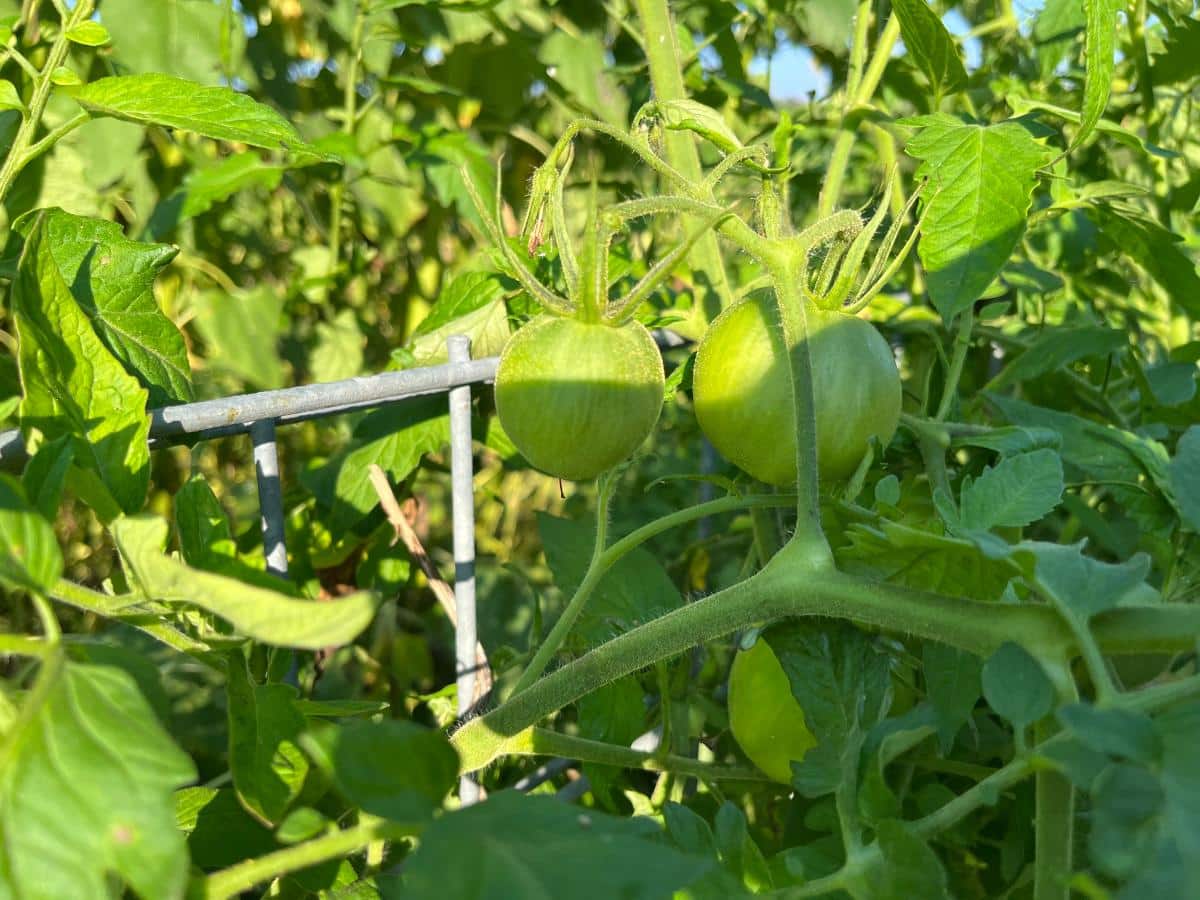
Prune leaves from the bottom of the plant so they are not close to or touching the soil.
Remove the lowest 6 to 8 inches of leaves at the base of every plant. Do this even if the plants are determinate varieties and even if you do not plan to prune the whole bush.
If you do have indeterminate tomato varieties and if you do plan to prune your tomato plants, keep up with it. The more foliage you remove, the less flesh the fungal spores can colonize, and therefore, they will reproduce less.
Also, regular pruning means that you will prune suckers and excess foliage off at an earlier stage when the stems are smaller. That leaves a smaller wound which results in less moisture loss and less area and open wounds for fungus and other diseases to infect.
9. Find a Few Good Preventions and Treatments for Blight (Preferably Natural and/or Organic)
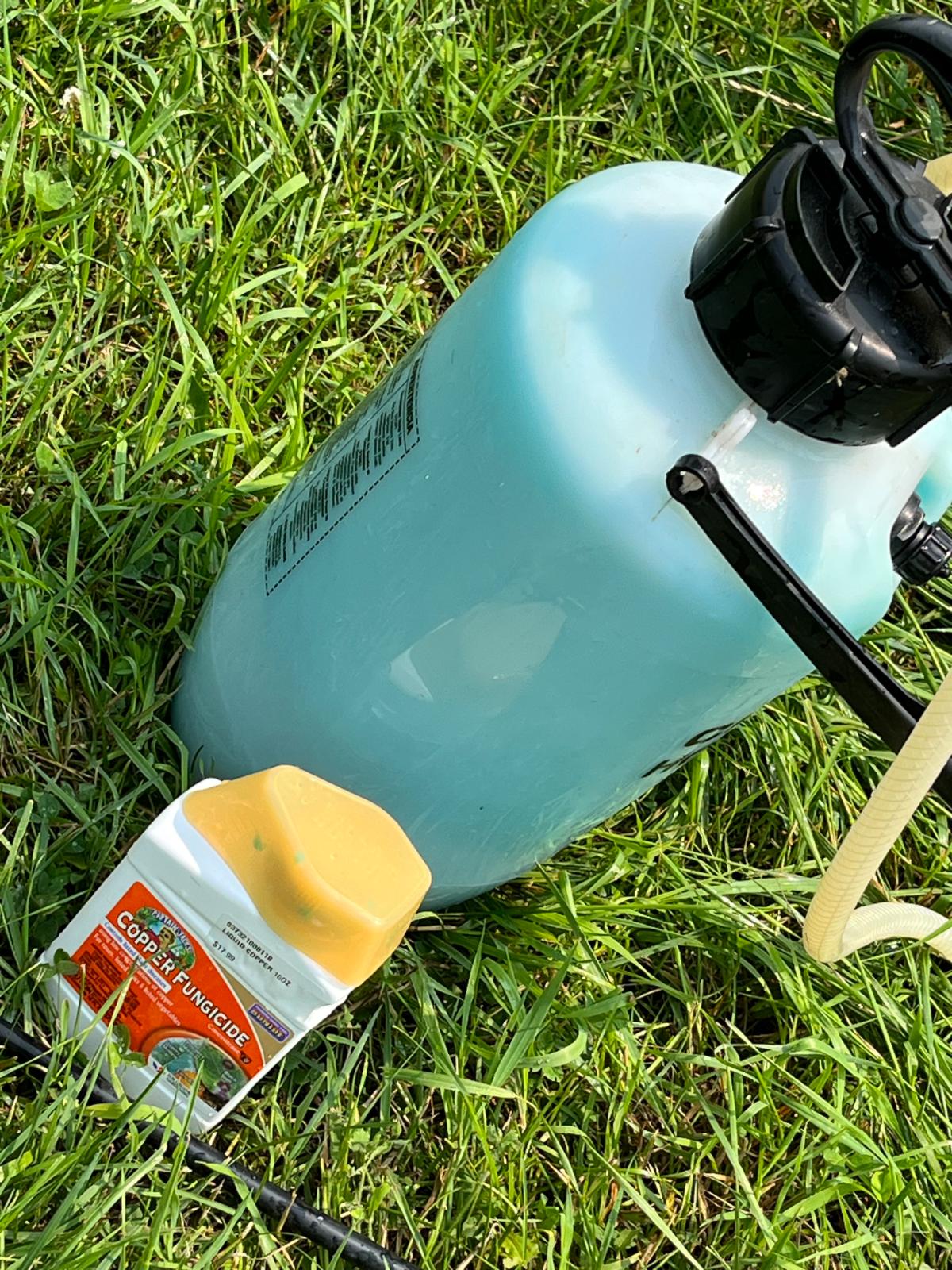
If you find some good organic options to use as prevention or treatment, you won’t mind using them.
When conditions seem ripe for blight – cool temperatures and high humidity or lots of rain – go ahead and spray preventatively once a week.
If you see signs of blight, apply according to label instructions (which may be a higher concentration or more frequent application).
Some good natural options include:
- Neem oil
- Copper fungicide
- Homemade Baking Soda Spray (which changes the plant surface pH so blight can’t colonize)
- Kaolin clay (which can be applied as a spray when mixed with water)
If Tomato Blight Rears its Ugly Head
If you do get blight, you can take some measures to slow it down so that its effects are limited. You may not be able to get rid of tomato blight completely once it has found your plants, but if you can keep it to a very low rate of growth, you can often still get a good harvest.
If blight does find your tomatoes:
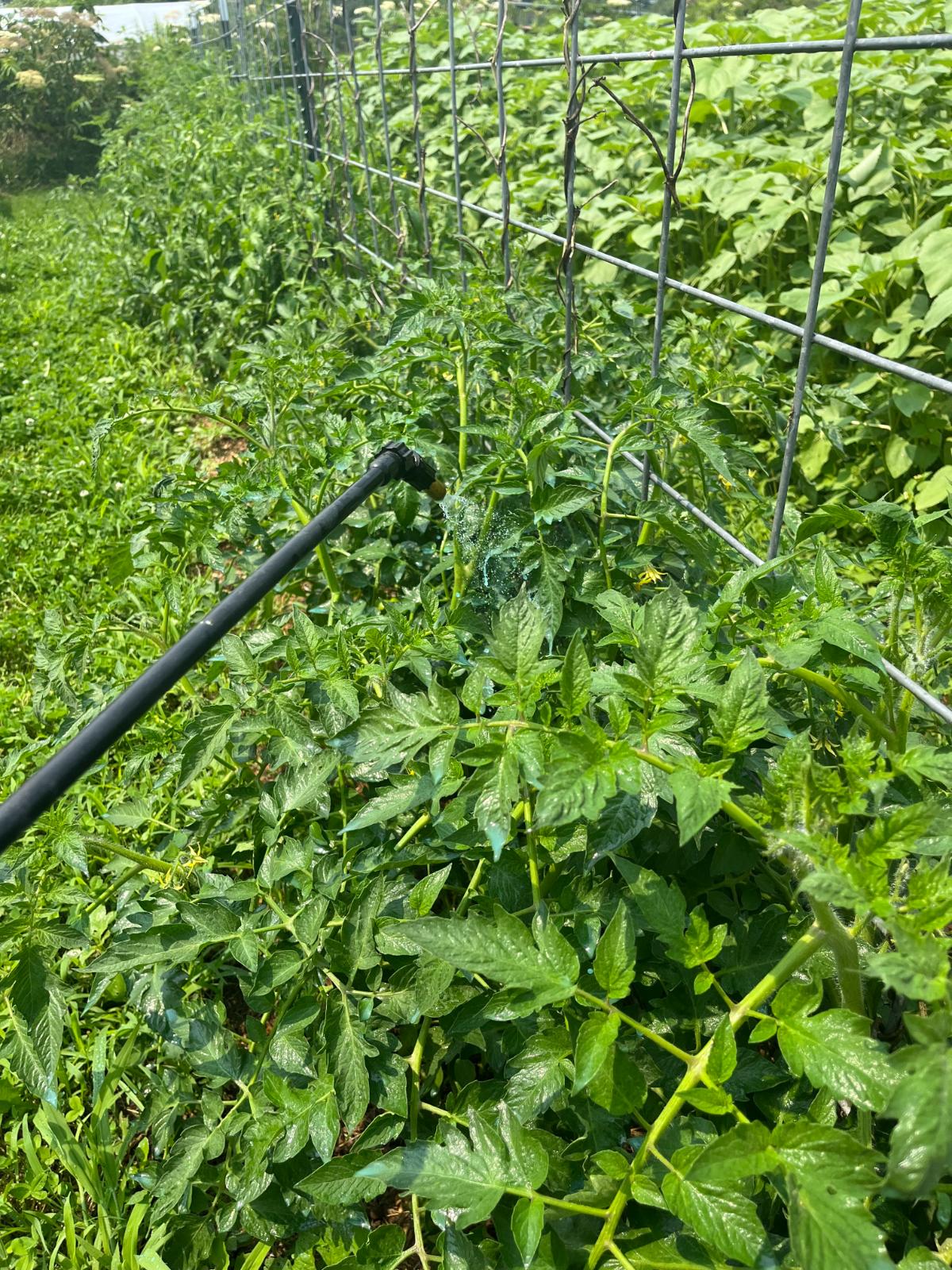
- Remove all infected leaves of the tomato plant and dispose of them
- It’s best to burn infected leaves, but if you can’t do that, bag them and throw them away in the trash
- Rake up any plant debris that is on the ground and get rid of it, too
- Don’t compost diseased tomato parts because the spores will live in the compost and then they can infect next year’s plants
- Some other types of plants are subject to blight spores, like potatoes – so infected soil or compost can harm them, too
- Choose your selected anti-fungal product and use it
- Reapply anti-fungal products on a regular basis, according to the label’s instructions
- If you are experiencing a lot of rain, reapply after the rain – these products get washed away and lose their effectiveness when it rains
- Don't stop applying antifungal sprays when symptoms seem to visually go away. Keep at it. The spores aren’t gone; they’re just controlled.
- If you stop applying antifungal products to plants with known blight, it will just come back
- At the end of the season, remove the entire tomato plant and all plants and plant parts that experienced blight (even if the blight was controlled and you got a harvest)
- Dispose of or burn the plants, as listed above
- Do not compost infected plants, and do not let dead infected tomato plants overwinter in your garden. These are hardy spores that can stay in the soil for a long time! Get rid of as much as you can.
